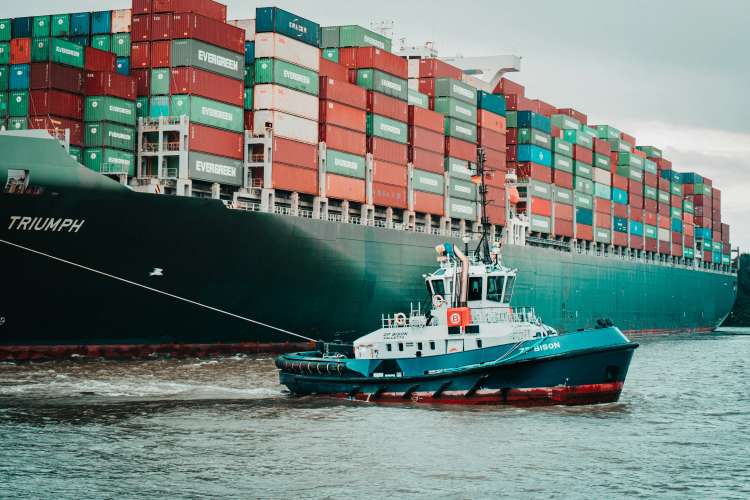
The Red Sea shipping crisis has significantly disrupted a substantial portion of global trade, including India’s, delivering a serious setback not only to shipping companies. The crisis, triggered by the Houthi’s unchecked assaults on commercial vessels in the narrow 26-km maritime corridor at Bab-Al-Mandab, has extended transit times via the Cape of Good Hope. This has led to shortages in vital energy products, minerals, and commodities, alongside spikes in freight and insurance costs, port congestions, and challenges in servicing new shipping lanes. These issues have caused a mild inflationary impact and adversely affected India’s export shipments.
As the situation worsens, the cascading effects deepen, highlighting the need to examine potential challenges to India’s external engagements and identify a path forward. The Red Sea crisis poses ongoing challenges for Indian businesses and consumers. Exporters, especially small businesses dependent on cost-effective shipping, are particularly hard hit. Rerouted journeys resulting in longer transit times have led to a dramatic increase in freight rates, doubling in some cases like Basmati rice exports, thus escalating export costs and diminishing the competitiveness of Indian goods globally.
READ | In trade renegotiation with ASEAN, India eyes higher exports, lower deficit
Exporters across various sectors report their products becoming less competitive in Western markets, with some buyers turning to alternative suppliers. They face higher working capital requirements, poor service times, and weak customer service. Labor-intensive exports such as agricultural products, textiles, leather, and handicrafts are among the most affected.
Importers are also suffering. The disrupted supply chains have led to shortages of essential commodities like fertilizers and fuel, crucial for agriculture and industry. These shortages, combined with increased insurance premiums for navigating riskier routes, are inflating import costs, with the broader risk of fueling inflation in the Indian economy.
Cascading Ripple-Effects of Red Sea attacks
The domino effect of the Red Sea crisis is clearly visible in the shortages across maritime transport sectors, affecting energy tankers, dry bulk carriers, containers, and other cargo units. These shortages have significant repercussions for India’s trade and economy. With energy tankers scarce, India’s reliance on imported oil and petroleum products faces potential disruptions, risking domestic price fluctuations and supply uncertainties. The lack of dry bulk carriers hampers the transport of crucial commodities like coal, iron ore, and grains, critical for India’s economic growth. Additionally, the scarcity of containers and cargo units disrupts goods flow, hampering exports and efforts to balance trade.
This effect has intensified demand for new vessels, leading to a historic rise in the Baltic Exchange’s dry bulk sea freight index. The crisis has also deterred investors from the global ship fleet market, anticipating better deals in the future. Furthermore, economic sanctions on energy companies and fleets from Russia, Iran, and Venezuela have complicated the crisis, especially affecting India, a significant importer of Venezuelan and Russian oil.
The Red Sea crisis not only affects global trade and economics but also poses significant environmental risks. The increased transit times and rerouted journeys through alternative maritime routes, such as the longer passage around the Cape of Good Hope, result in higher fuel consumption and emissions. Moreover, the risk of maritime accidents in congested and less secure shipping lanes heightens the potential for devastating oil spills, threatening marine biodiversity and coastal ecosystems. This environmental dimension underscores the urgency of addressing the crisis with sustainable and eco-friendly solutions.
The Way Ahead
This crisis underscores the importance of diversifying and strengthening India’s supply chains and logistics infrastructure to mitigate future disruptions. India’s diplomatic efforts are crucial in ensuring smooth global trade through the Red Sea. Engaging in dialogue with regional actors can foster cooperation and prevent crises like the Suez Canal blockage.
In the short term, India should diversify shipping routes, enhance port capacity, promote domestic production, and stockpile essential items to alleviate immediate pressures. For long-term resilience, investing in alternative transport corridors, such as the proposed India-Middle East-Europe Corridor (IMEC), and others, is vital.
The India-UAE agreement on IMEC is a positive step, and completing the remaining 300 km of the railway stretch to Haifa port should be a priority. Swift and strategic action will enable India to navigate this crisis and enhance its resilience against future global trade disruptions.
Advancements in technology offer promising avenues for mitigating the impacts of the Red Sea crisis and enhancing maritime security. The use of satellite imaging and AIS (Automatic Identification System) tracking can improve the monitoring of shipping lanes, identifying risks, and rerouting vessels proactively to avoid conflict zones. Moreover, blockchain technology can enhance supply chain transparency and efficiency, reducing the impact of disruptions on global trade. Investing in these technologies can bolster India’s resilience to maritime crises, ensuring the continuity and security of its trade routes.
(Dr Ram Singh is Professor and Aaqib Chaudhary a research scholar at IIFT New Delhi. Views expressed are personal.)
